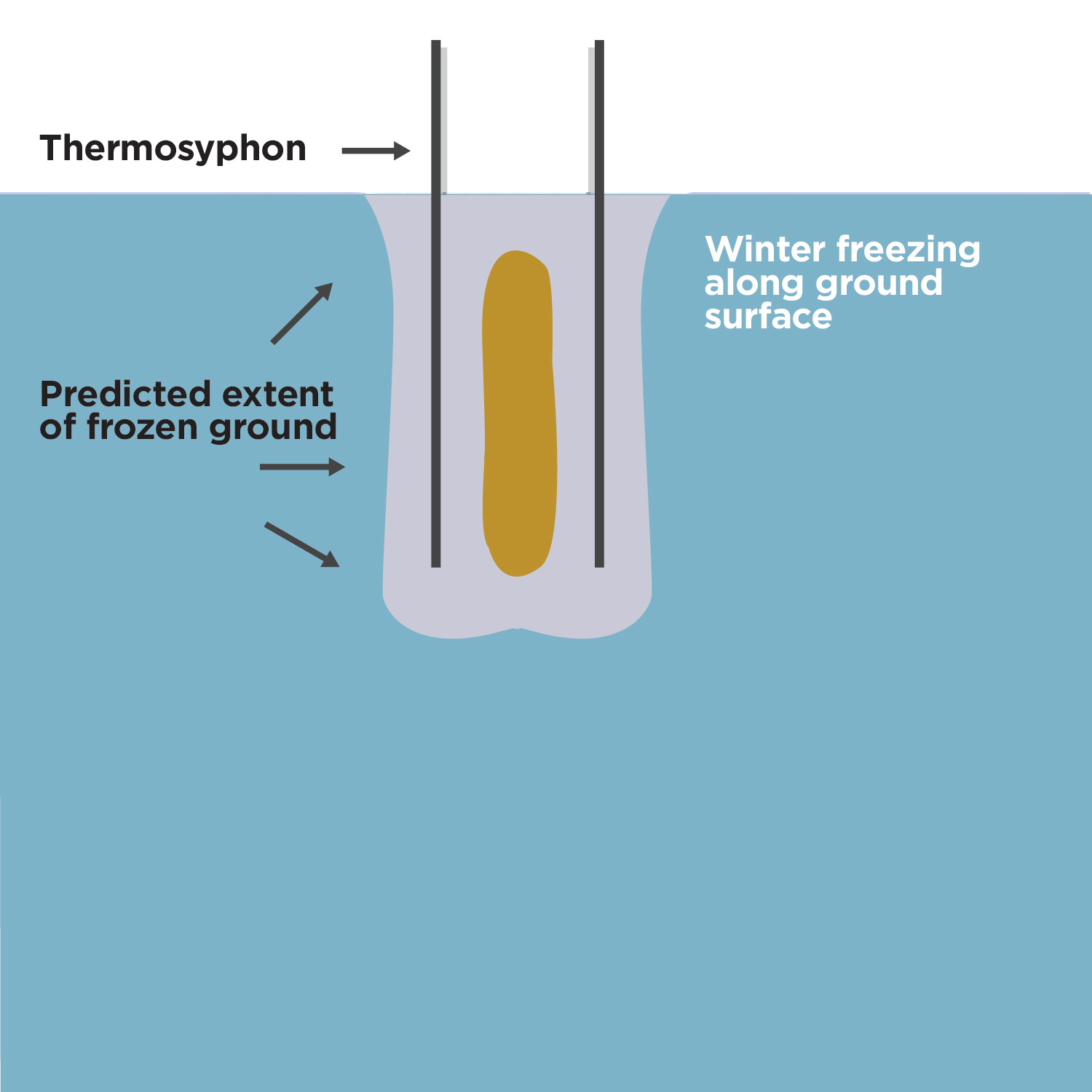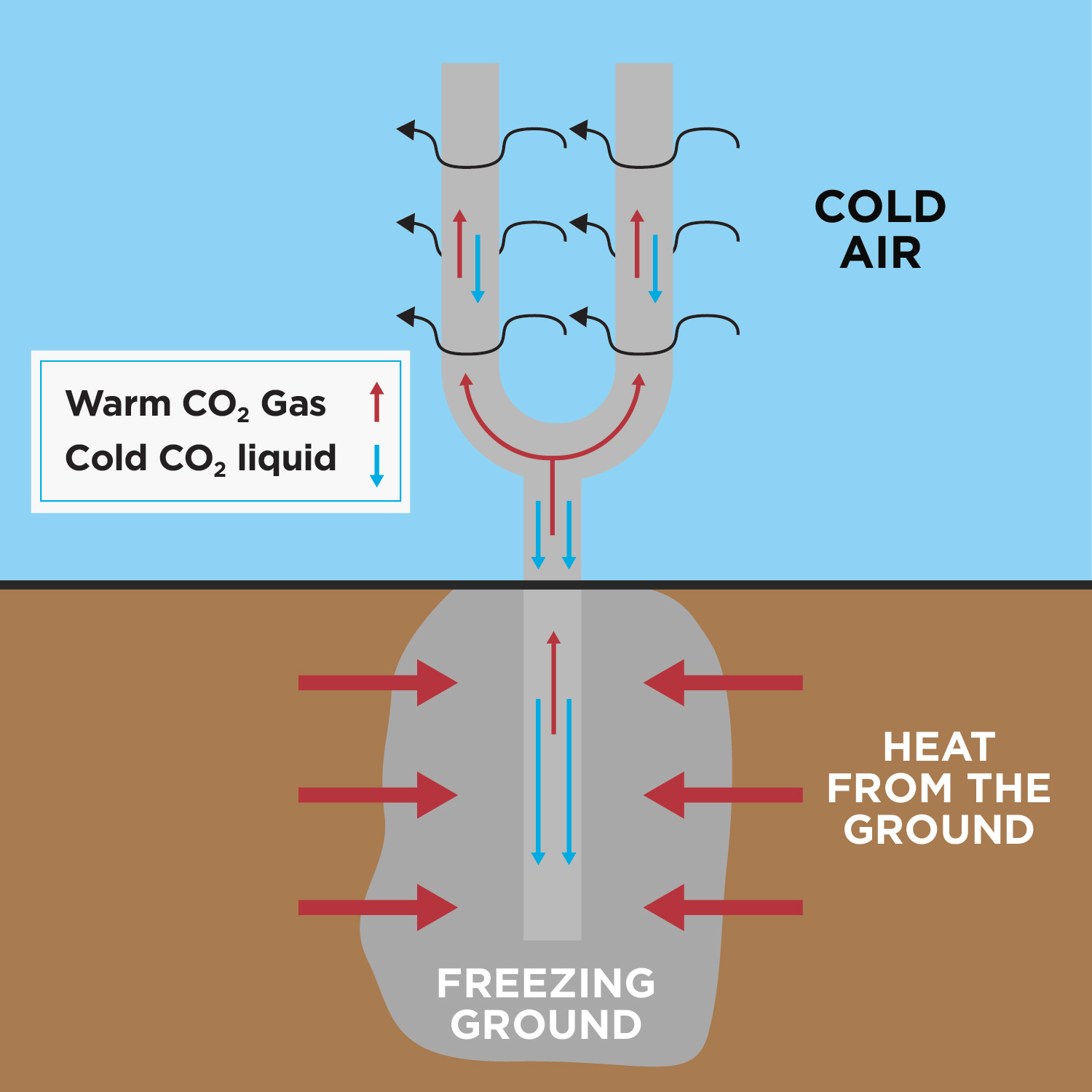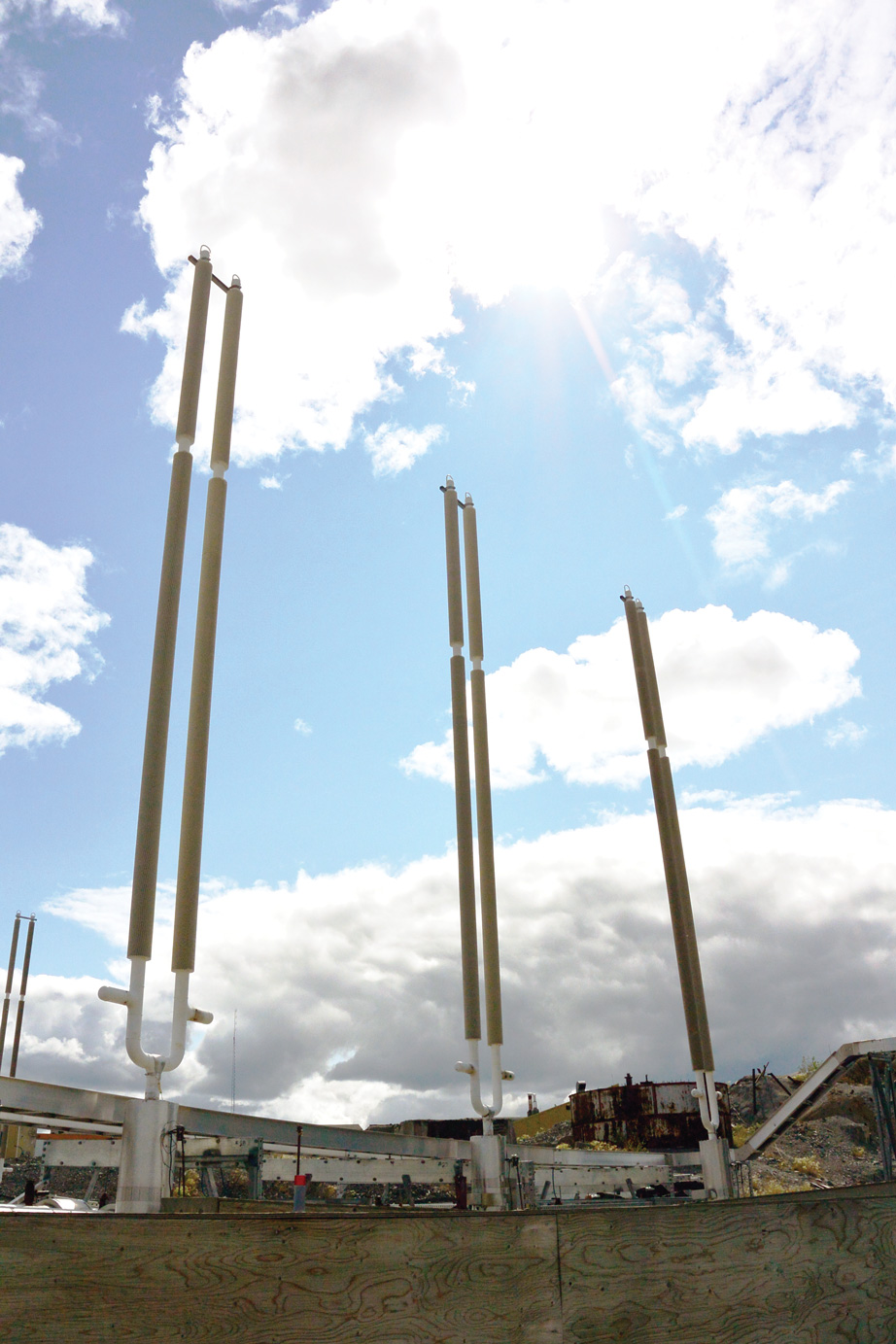Freeze remediation: plain language summary
PDF Version (3.8 Mb, 2 pages)
On this page
Background
The Giant Mine is located within the city limits of Yellowknife, Northwest Territories. It was an active gold mine from 1948 to 2004. After rock was mined, it had to be processed to separate gold from arsenopyrite rock. This was done by roasting the rock at an extremely high temperature.
One of the by- products of roasting was arsenic trioxide dust. During mining, large openings underground, called stopes or chambers, were dug out. Over the years, these were used to store the arsenic trioxide dust. Once a chamber or stope was full, it was sealed, which contained the dust safely underground. This prevented it from getting to the surface or in the water and damaging the environment or causing harm to people.
Right now, pumps are being used to keep water levels below the chambers and stopes to prevent contamination. However, a long term-solution to keep the dust out of surrounding water is needed. The Giant Mine Remediation Project Team has chosen to freeze the arsenic chambers as a long-term solution for keeping the dust from entering the surrounding environment. Here's a summary of this method.
Freezing as a solution
Many different plans to safely and effectively manage the arsenic trioxide at Giant Mine were considered. To choose the best solution, engineers studied all the options as well as the site itself. They then generated a Design Basis Report (DBR).
This report is a technical document. It defines what the project is trying to resolve, (in this case to contain the arsenic that is stored underground), how to design the solution and then evaluates how well it will work. Engineers and government regulators are using this report to start the detailed design of how the system will actually be built. The option chosen for managing arsenic trioxide dust for the long-term is to create a frozen area in and around each of the arsenic-filled underground chambers and stopes. This will be done using thermosyphons, or large pipes. The option is shown in the image below.
This report includes recommended temperatures for in and around the chambers and stopes. By freezing the ground and creating a barrier of frozen rock, underground water will not reach the arsenic trioxide dust. The practice of freezing the ground has been used around the world since 1800s. It has proven very effective.

How can ground be frozen?
Two main freezing technologies are available at Giant Mine: freezing the ground "actively" using a refrigeration system, or "passively" using cold winter air conditions.
With an active system, a series of pipes filled with liquid coolant are put into the ground. The coolant draws the heat out of the ground before flowing back to the refrigeration plant. There, it is cooled, then pumped back into the ground to repeat the process. Artificial ice for hockey rinks is created the same way. This option would need both a "freeze" plant and workers to operate it.
A passive freeze system relies on cold air temperatures so can only be used in far northern climates. A freeze plant is not needed; instead, it uses specially-designed pipes called thermosyphons. The pipes are filled with carbon dioxide (CO2) gas. A portion of the pipe sticks out of the ground, as shown in the diagram and photograph.


Thermosyphons use the heat in the ground and the cold northern air to create a cooling cycle. The heat from the ground warms the CO2 in the bottom of the pipes. This causes the gas to rise to the top of the pipes, which is exposed to the cold winter air. As the winter air cools the gas, the gas turns (condenses) into a liquid. This liquid then flows back down to the bottom of the pipe, where it is again heated by the ground. This process continues as long as the air is cold enough to condense the gas to a liquid and the ground is warm enough to convert it back to a gas. When the air gets warmer than the ground, the process temporarily stops. In Yellowknife, the summer is too short to affect the system.
In both active and passive freeze systems, the time it takes to first freeze the ground depends on several design options, for example:
- the number of thermosyphons or active coolant pipes
- what the weather is like year to year, or
- the temperature of the coolant supplied by a freeze plant
Freeze design
The following freezing criteria will be met:
- The dust will be considered contained when a 5m wide frozen shell at -5°C or colder exists in the bedrock or fill around each arsenic containing chamber, stope, drift or pit fill
The DBR recommends the following criteria for the design:
- The remediation plan should include installing a fully-passive freeze system that uses thermosyphons. These should be spaced around each chamber and stope to account for difference in geology, geometry, future climate change and freeze scheduling
- The thermosyphons pipes should be installed from the surface to far enough below each chamber or stope so that they freeze the ground directly below without the cost or risks associated with installing horizontal piping under the stopes/ chambers
Active freezing will only be used if it becomes important to freeze the ground more quickly. In this situation, the active freeze pipes would someday be converted to passive thermosyphons to keep the dust frozen.
To monitor the initial freezing process, as well as ensure the ground stays frozen, temperature sensors will be installed at various depths around the chambers and stopes. Their readings will be compared to temperature models developed by engineers. This will help assess the freeze status as the ground cools and identify any potential problems.